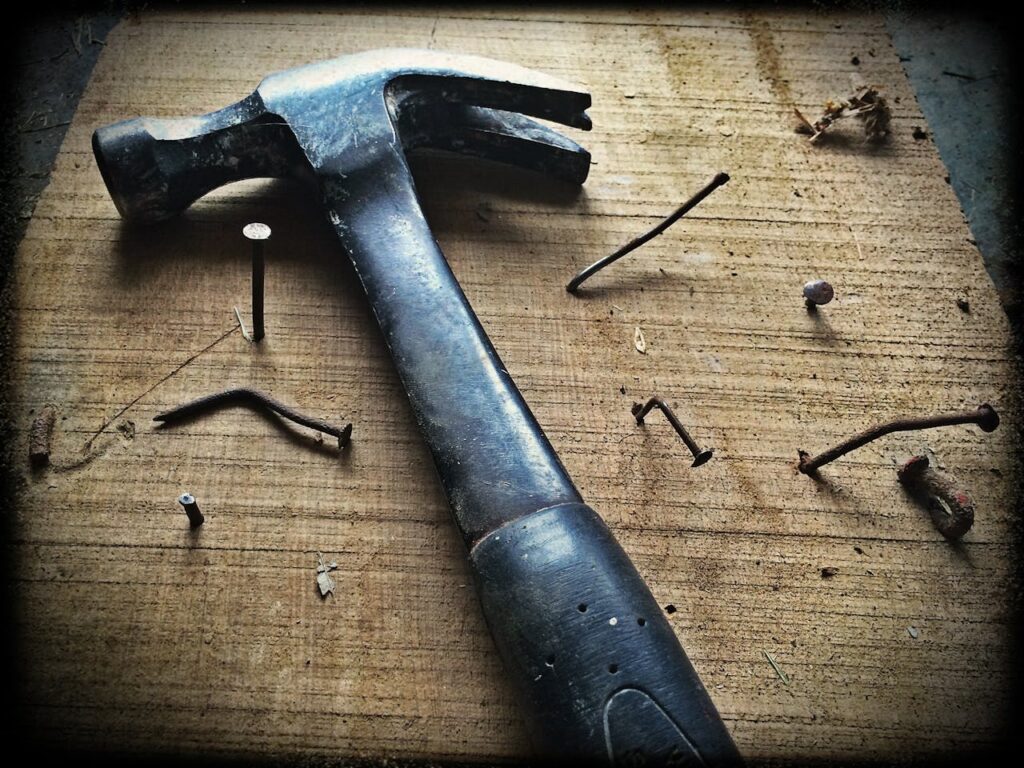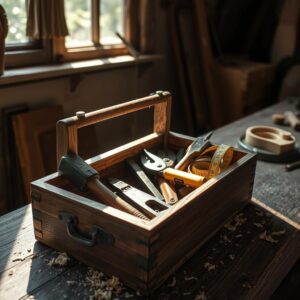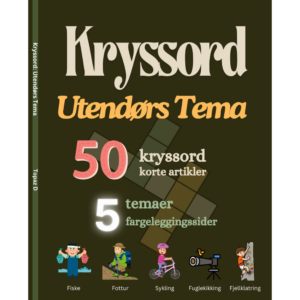
Explore & Play
Discover interesting topics and solve the accompanying crossword puzzle.
Tool Crossword | Essential DIY Tools Guide
Table of Contents
Welcome to our engaging tool crossword puzzle! You can start by solving the “Tool crossword” at the beginning of this post for a fun challenge. If you’re new to the topic or want to deepen your understanding, feel free to read the detailed article that follows. Once you’ve gained some insights, come back and try your hand at the crossword again. Enjoy both the puzzle and the knowledge!
Tool Crossword
You can either fill in the crossword puzzle directly on this page or click the button in the bottom right corner to print it for free.

The Essential Tools for Every DIY Enthusiast
Whether you’re a seasoned DIY enthusiast or just starting your journey into home improvement, having the right tools at your disposal is crucial for any project. In this article, we’ll explore the must-have tools for every DIY toolkit, providing insights into their uses, benefits, and maintenance. We’ll also touch on a crossword puzzle featuring these tools, adding a fun element to your learning experience.
Why Tools Matter
Understanding the importance of each tool can make a significant difference in the efficiency and outcome of your DIY projects. With the right tools, you can execute tasks more accurately and with greater ease. Let’s delve into the essentials that every DIY enthusiast should have.
Basic Hand Tools
Every DIY toolkit should start with a collection of essential hand tools that are versatile and reliable. These tools form the foundation of any successful project.
Hammer
The hammer is perhaps the most fundamental tool, perfect for driving nails into various materials. This simple yet powerful tool comes in several types, including the claw hammer for general use and the sledgehammer for heavy-duty tasks. Ensure you choose the right hammer based on your project’s needs. Regular maintenance involves keeping the handle tight and inspecting the head for damage.
Screwdriver
A screwdriver is indispensable for assembling furniture or fixing appliances. With various types, such as flathead and Phillips, each screwdriver is designed for specific screw types. It’s crucial to match the screwdriver with the screw head to avoid stripping it. Proper care includes keeping the tips clean and straight.
Wrench
Wrenches are essential for tightening and loosening nuts and bolts in a variety of mechanical tasks. Adjustable wrenches are versatile and can handle various sizes, while fixed wrenches are designed for specific measurements. Regularly check for wear and ensure that the wrench fits snugly around the bolt to prevent slippage.
Pliers
Pliers come in handy for gripping, bending, and cutting wire or other materials. Needle-nose pliers are perfect for precision work, while slip-joint pliers adjust to different sizes. Keep the jaws clean and lubricate the pivot points to ensure smooth operation.
Utility Knife
A utility knife is a versatile tool for cutting various materials with precision. Its retractable blade makes it safe to use and store. Regularly replace the blade to maintain sharpness and clean the knife after use to avoid buildup.
Measuring and Leveling Tools
Accurate measurements and proper leveling are crucial for ensuring that your projects turn out perfectly. These tools help you achieve precision in your work.
Tape Measure
A tape measure allows you to measure lengths and dimensions with ease. It typically features a flexible blade and a locking mechanism. Ensure you choose a tape measure with clear markings and a durable case. For accuracy, retract the tape carefully to avoid damage.
Level
A level ensures that your surfaces and installations are perfectly horizontal or vertical. Bubble levels and laser levels are commonly used, with laser levels providing greater precision for larger projects. Regularly check the level’s calibration to ensure accurate readings.
Cutting Tools
Cutting tools are essential for shaping and resizing materials for your projects. From manual saws to power tools, these instruments make cutting tasks manageable.
Saw
Saws are critical for cutting through wood, metal, and other materials. Hand saws are versatile for smaller projects, while circular saws can handle larger cuts. Always use the appropriate saw for the material you’re cutting and ensure the blade is sharp and well-maintained.
Hacksaw
A hacksaw is particularly useful for cutting metal and plastic pipes. Its fine-toothed blade allows for precise cuts. Regularly check the tension of the blade and replace it when it becomes dull.
Reciprocating Saw
For demolition or cutting in tight spaces, a reciprocating saw offers powerful, back-and-forth cutting action. It’s ideal for heavy-duty tasks and can handle a variety of materials. Ensure you use the correct blade type for your cutting needs and always follow safety guidelines.
Specialized Tools
Specialized tools can significantly enhance your capability to tackle more complex or specific tasks. These tools are designed for particular functions and can make a big difference in your projects.
Drill
A drill is a versatile tool for making holes and driving screws. Cordless drills offer mobility, while corded drills provide consistent power. Choose the right drill bit for your material and maintain the drill by keeping it clean and checking the battery or cord regularly.
Router
A router is used to hollow out or shape wood with precision. It’s perfect for decorative edges and intricate designs. Select the appropriate bit for your project and ensure the router is securely adjusted before use.
Caulking Gun
For sealing gaps and cracks, a caulking gun is an indispensable tool. It allows for precise application of sealants and adhesives. Choose a caulk that matches your needs and ensure the gun is clean and free of old residue.
Angle Grinder
An angle grinder is essential for grinding, cutting, and polishing metal and other materials. It’s a powerful tool that requires careful handling. Always use the appropriate disc for the task and wear protective gear to prevent accidents.
Holding and Clamping Tools
Holding and clamping tools help secure materials and keep your work stable. These tools ensure that your projects stay in place while you work on them.
Clamps
Clamps are essential for holding materials together while you work on them. From C-clamps to bar clamps, each type offers different holding capacities and applications. Ensure the clamp is properly tightened and avoid overloading it.
Vise
A vise provides a secure grip on materials for precise work. It’s commonly used for woodworking and metalworking tasks. Regularly check the vise for alignment and lubrication to maintain its effectiveness.
Power Tools
Power tools can speed up your work and handle tasks that are difficult with manual tools alone. These tools are designed to provide greater efficiency and power.
Impact Wrench
An impact wrench delivers high torque for loosening or tightening bolts quickly. It’s ideal for automotive repairs and heavy-duty tasks. Choose between cordless and pneumatic models based on your needs and maintain the tool by checking the battery or air connections.
Belt Sander
For large surface smoothing, a belt sander is highly effective. It quickly removes material and prepares surfaces for finishing. Regularly check the sander’s belt and ensure proper alignment to avoid uneven sanding.
Safety Tools
Safety should always be a priority when using tools, and having the right protective gear is essential. These tools help protect you from potential hazards.
Safety Goggles
Safety goggles protect your eyes from debris and dust during tool use. They are essential for maintaining eye health and ensuring safety. Choose goggles that fit securely and provide adequate coverage.
Gloves
Wearing gloves can protect your hands from cuts, splinters, and abrasions. Select gloves that offer the right balance of protection and dexterity for your tasks. Regularly inspect gloves for wear and tear and replace them as needed.
Tool Maintenance and Care
Maintaining your tools ensures their longevity and performance. Proper care extends the life of your tools and keeps them working effectively.
Cleaning and Storing Tools
Proper cleaning and storage practices will extend the life of your tools. Clean tools after each use to remove debris and prevent rust. Store them in a dry, organized manner to avoid damage and ensure easy access.
Integrating Tools into Your Projects
Understanding how to effectively use and integrate these tools into your projects will enhance your DIY skills. Combining different tools can lead to more efficient and successful project completion.
Practical Application Tips
Learn how to combine different tools for more efficient project completion. For example, using a drill and screwdriver together can speed up assembly tasks, while a saw and sander can prepare wood surfaces for finishing. Plan your workflow to maximize efficiency and effectiveness.
Final Thoughts
Equipped with these essential tools, you’ll be ready to tackle any DIY project with confidence and efficiency. Remember, each tool plays a specific role in ensuring the success of your projects. By understanding their uses and maintaining them properly, you can enhance your DIY skills and achieve professional results.
Share to...
I hope you enjoy the content.
Want to receive our daily crossword puzzle or article? Subscribe!
You may also be interested in
Share to…
Want to receive our daily crossword puzzle?
-
Jigsaw Puzzles
Art Nouveau Puzzle – White Rabbit in a Whimsical Garden 250 | 300 | 500 Pieces
kr 348,00 – kr 439,00Price range: kr 348,00 through kr 439,00 Select options This product has multiple variants. The options may be chosen on the product page -
Jigsaw Puzzles
Art Nouveau Jigsaw Puzzle with Betta Fish in Lush Garden Scene 250 | 300 | 500 Pieces
kr 348,00 – kr 439,00Price range: kr 348,00 through kr 439,00 Select options This product has multiple variants. The options may be chosen on the product page -
Jigsaw Puzzles
Cozy Art Nouveau Cat Puzzle 250 | 300 | 500 Pieces
kr 348,00 – kr 439,00Price range: kr 348,00 through kr 439,00 Select options This product has multiple variants. The options may be chosen on the product page

















